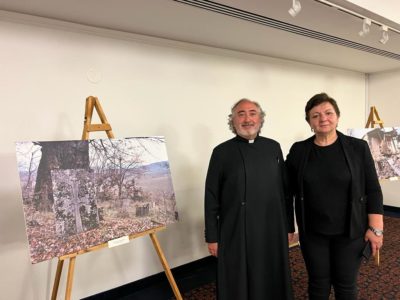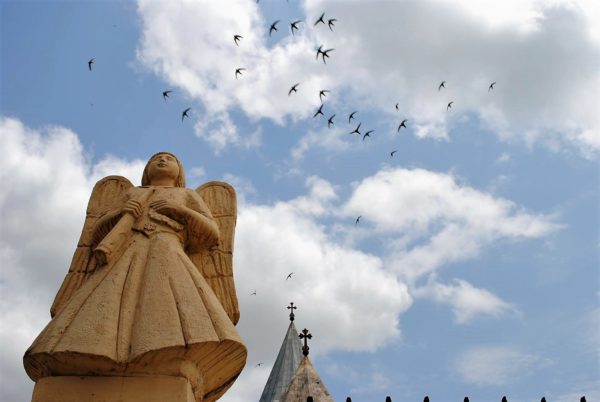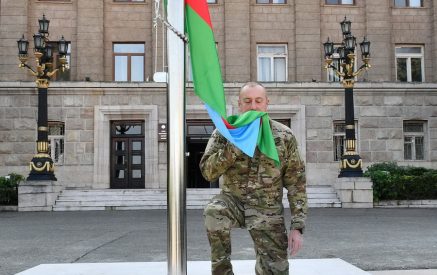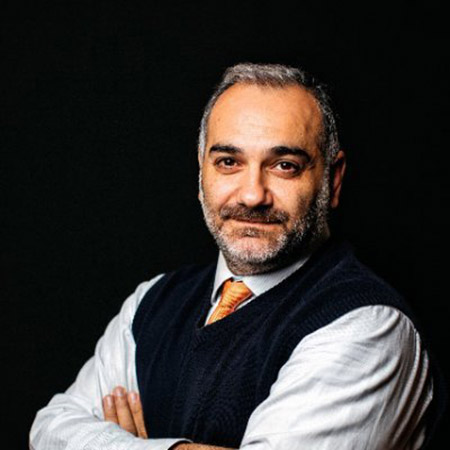By Florence Avakian
NEW YORK — It was more like an Armenian homecoming, as a curious but passionately interested audience gathered together on Thursday, May 26 at the Armenian Diocese to see exquisite photographs of Artsakh churches and villages, and hear of the latest developments from Dr. Marina Mchitarian who had spent many weeks visiting the area and speaking with several inhabitants.
The presentation titled, “Artsakh: Angel of Peace,” is embodied and symbolized in two white statues before the Ghazanchetsots cathedral standing spiritual and proud. Following the catastrophic invasion of Artsakh by Azerbaijan and Turkey, almost 75 percent of this beloved territory has been occupied by the enemy, and the Armenian inhabitants in the 25 percent still under Armenian control are continually attacked.
Read also

On May 26, the Diocesan Center in New York held an exhibit titled “Artsakh: Angel of Peace,” featuring photo of churches and villages in Artsakh taken by Dr. Marina Mchitarian (pictured at right). Diocesan Vicar Fr. Simeon Odabashian (pictured left) led the evening, which was organized by the Eastern Diocese’s Zohrab Information Center.
The event was planned and sponsored by the Zohrab Information Center under the directorship of Dr. Jesse Arlen who was not able attend due to illness. Some attendees (including this writer) had visited this ancient and beautiful Armenian land, but many had come to learn more and see the display of unique photographs.
Opening the program, and introducing the speaker, the Diocesan Vicar, the Very Rev. Simeon Odabashian welcomed the crowd and called Mchitarian “a heroine.” He stated that the “44-Day War and the occupation of our beloved land has deeply affected all Armenians.”
Throughout her deeply emotional talk, accentuated by her passionate love for this millennia-long Armenian land with its picturesque landscape of mountains, greenery, waterfalls, lakes, churches, monasteries, and khachkars, Mchitarian revealed that she had first visited Artsakh in 2007.
Her last trip there in 2020, when she went to Dadivank Monastery in Kelbajar, the interior of which the enemy completely destroyed in the first Karabakh war, was for her a “goodbye forever” trip as the 2020 war started shortly after.
With Zohrab Information Center staff member Andrew Kayaian monitoring the video presentation, the speaker declared “Artsakh is our identity, a symbol of the unity of the Armenian people.”

Amaras Monastery
Two weeks before the war, she had visited the students of Artsakh State University. After the war, a 19-year-old student told her, “I dream of Artsakh rising from the ashes and blooming again.”
Mchitarian also visited many villagers in the highlands of Artsakh, with the blossoming symbolic pomegranate trees. She spoke to young and old who declared their undying love for their land. One grandfather stated through tears, “We will struggle until our last breath for this land.”
Of Armenian and Greek parentage, Mchitarian spoke in memory of the legendary Greek writer Nikos Kazantzakis, said to the pomegranate tree, “Sister, speak to me of Artsakh, and the pomegranate tree blossomed.”
Mchitarian is the founding president of “Action for Peace,” an Armenian NGO. She received her PhD in mathematics, then pursued doctoral studies in archeology in Greece and Belgium. Fluent in Armenian, Greek, Russian and English, she worked for 15 years at the Mother See of Echmiadzin, in the field of safeguarding cultural heritage. She has also worked for the Dutch NGO “Walk of Truth” at the Hague for three years.
Since February 2020, she has been an independent researcher investigating religious freedom, peace and reconciliation for the endangered Christians in the Middle East, and registered the NGO “Action for Peace” in Armenia where she conducted documentary photography projects in Artsakh in 2020 and 2021. She collaborates with the NYC-based “Save Armenian Monuments” under the auspices of the Eastern Prelacy.
Save Armenian Monuments
At this event, Dr. Virginia Davies, another member of the Save Armenian Monuments foundation, and a member of “Women Startup Armenia” spoke also. Raised in Toronto, Canada, and now living In New York, she is the granddaughter of Armenian Genocide survivors.
“I wanted to memorialize my grandfather’s church in Artsakh, St. Minas, in the Hak village of Kashatagh, because his family was killed there. The village resonated with me.”
Visiting Artsakh many times, she said that after the 1990 Karabakh war, “we Armenians forgot that more than a thousand religious monuments had to be restored, and villages needed rebuilding.”
In Hak, she and Mchitarian were involved in building schools, restoring the church, starting a water system, and increasing the number of cattle. “All is now gone, under occupation,” she declared tearfully, but we are not giving up.” She quoted the inspiring words of her grandmother who stated, “you will be honored by what you do.”
Save Armenian Monuments is dedicated to cleaning up churches, and building the needs of villages,” she said with passionate determination. “Our foundation demonstrates how we are as a people. “We have to work and save our people in Artsakh,” she declared, slowly emphasizing each word.
Following the inspirational talks, the crowd spent much time during the reception conversing with the speakers and viewing the unforgettable array of photographs taken by Mchitarian, including the meditative and iconic Dadivank Monastery, and the Ghazanchetsots Cathedral with the symbolic Angel of Peace statues.























































